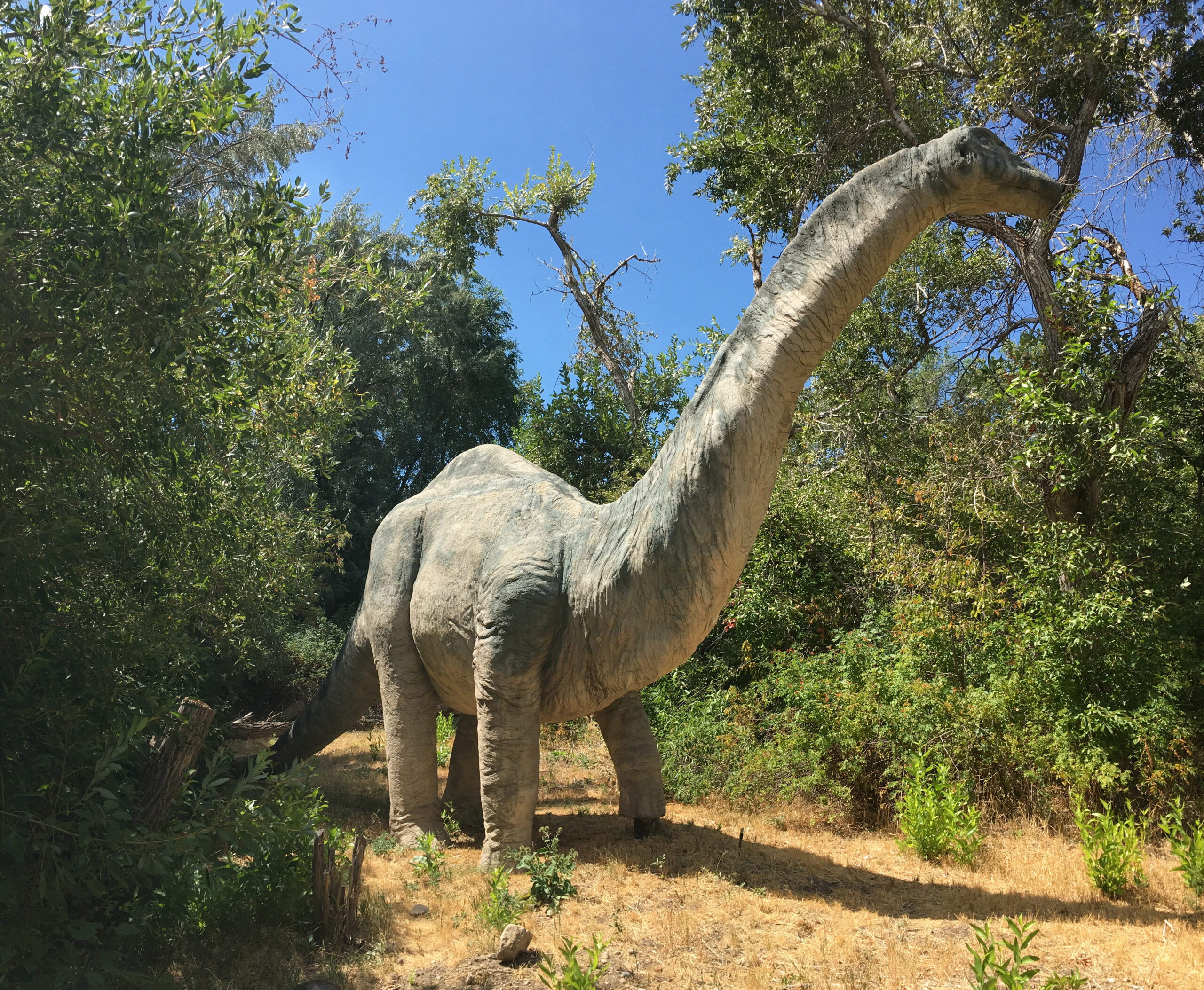
Species: ajax, louisae
Range: Late Jurassic (Tithonian, 150-145 MYA) from Arizona to South Dakota, including Utah, Wyoming, and Oklahoma
Size estimate: 70-75 ft length, 18-25 tons
Discovery: Othniel Charles Marsh, 1877
Classification: dinosauria, saurischia, sauropoda, diplodocidae, apatosaurinae
Since no one has ever seen a living dinosaur, and the missing pieces of the fossil record withhold important clues to their appearance, no artistic representation of a dinosaur ever gets it 100% right. On top of that, new discoveries can change our ideas of extinct creatures drastically. So, how close does this sculpture come to what we currently know of the original animal?
© 2023 Dinosaur Park • All Rights Reserved.